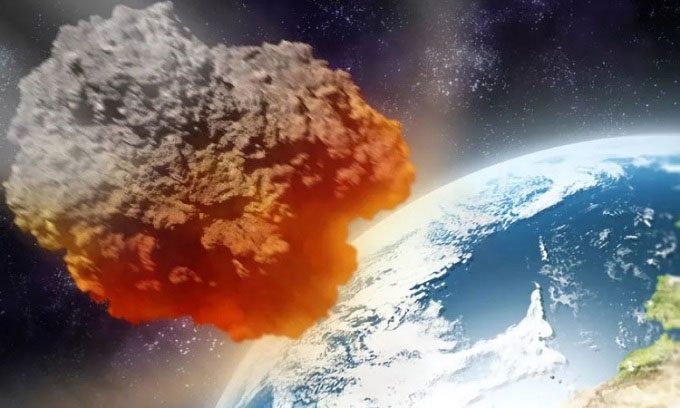Astronomers are planning to collect a meteorite from another star system that crashed into the Pacific Ocean with an energy equivalent to 110 tons of TNT.

Simulation of a meteorite heading towards Earth. (Photo: Maciej Frolow)
A research team from Harvard University hopes to find fragments of the interstellar meteorite named CNEOS 2014-01-08 that struck Earth on January 8, 2014. Discovering such fragments would represent humanity’s first contact with material larger than dust from outside the Solar System, according to Amir Siraj, an astrophysicist at Harvard University and the lead author of the study published on the ArXiv database on August 5.
Siraj identified the interstellar origin of the object in a 2019 study with 99.999% certainty, but it wasn’t until May 2022 that the U.S. Space Command confirmed his conclusion. No eyewitnesses observed the object as it struck Earth. “The meteorite passed through the atmosphere about 160 km off the coast of Papua New Guinea at midnight, with energy equivalent to 1% of the atomic bomb dropped on Hiroshima,” Siraj stated.
With a width of 0.5 meters, CNEOS 2014-01-08 is now the first interstellar object identified in the Solar System. Previously, this title belonged to an ‘Oumuamua, a cigar-shaped object discovered in 2017 through the Pan-STARRS observatory, traveling through the Solar System at a speed of nearly 92,000 km/h. CNEOS 2014-01-08 is believed to originate from another star system as it moves at 60 km/second, too fast to be influenced by the Sun’s gravitational pull. According to Siraj, CNEOS 2014-01-08 exceeds the speed limit for objects being attracted by the Sun. Since the meteorite did not come near any other planets along its path, it certainly must have originated from outside the Solar System.
Siraj mentioned that he and his colleagues will conduct a $1.6 million expedition to deploy a large magnet the size of a bed at 1.3 degrees south latitude and 147.6 degrees east longitude, the location where the meteorite fell as identified by the U.S. Department of Defense. This site is approximately 300 km north of Manus Island in the Bismarck Sea, southwest of the Pacific Ocean.
CNEOS 2014-01-08 has material properties that far exceed those of ordinary iron meteorites, making collection easier. Material strength refers to the ability to withstand deformation or damage due to weight. “Most meteorites contain enough iron to be attracted to the type of magnet we plan to use for the marine expedition in the Galileo project,” Siraj noted. “With its extremely high material strength, it is likely that fragments of CNEOS 2014-01-08 are metallic iron.”
Setting sail from Papua New Guinea, the Galileo project ship will use a magnet mounted on a winch to drag along the seabed at a depth of 1.7 km for 10 days. The research team hopes to collect small fragments of the meteorite down to 0.1 mm in size. However, they have not disclosed the timeline for the expedition.





















































